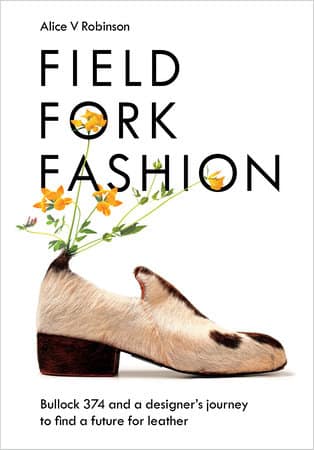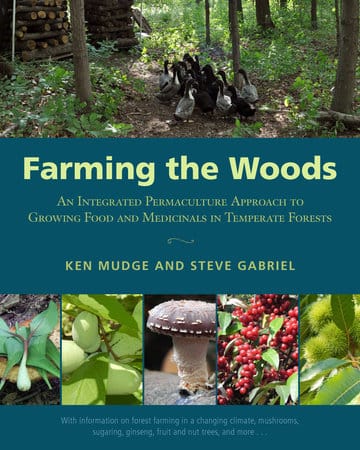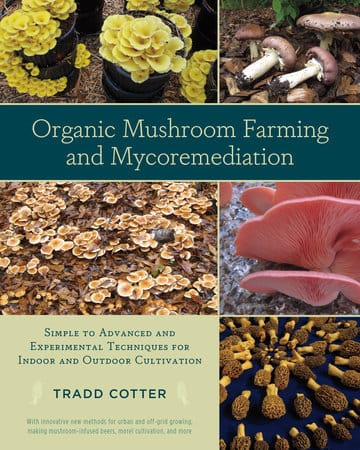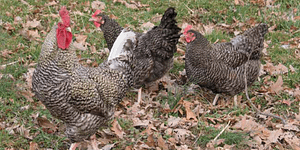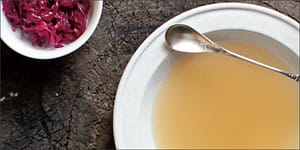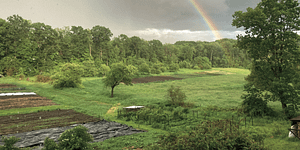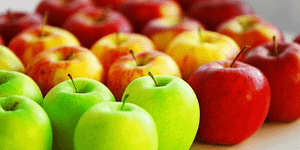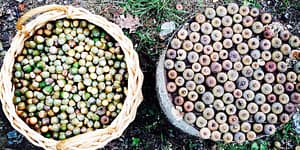The Significance of America’s Maple Syrup History
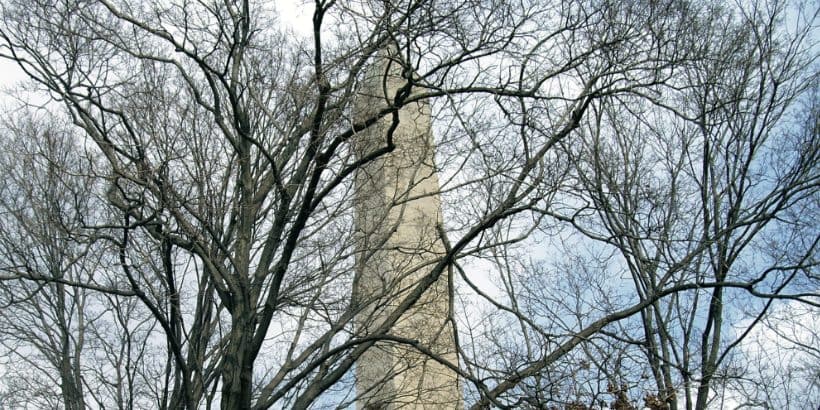
Everything is better with maple syrup. At least that’s what you’ll hear when you ask Vermonters. So what better way to solidify your love for all things maple than to learn how to make it yourself?
The Sugarmaker’s Companion by Michael Farrell is a comprehensive guide for both beginning and professional, home-scale and commercial maple producers, providing an invaluable resource for anyone who wants to make a profit producing syrup—and have fun doing it.
The following is an excerpt from The Sugarmaker’s Companion by Michael Farrell. It has been adapted for the web.
(Photo courtesy of Micheal Farrell.)
Maple Syrup: A History
It’s amazing how the act of sugaring can change your outlook on pure maple syrup. Before I got into making syrup, I didn’t really care what I put on my pancakes and never thought about the difference between pure and artificial syrups. Now I can’t even fathom having that sort of attitude. If you don’t already have a strong passion for pure maple, once you start tapping trees and making your own syrup I have no doubt that your feelings will change.
There isn’t a sugarmaker in the world who would think of using artificial syrups; many of us choose pure maple as our sole sweetener. The only reason anyone should buy the fake stuff is to use as teaching tool when explaining the differences between real and imitation syrups. I have to purchase a bottle of “pancake syrup” every year for our tasting trials with local students. It pains me to do so, but the benefits of showing kids how much better the real stuff is make it well worth it.
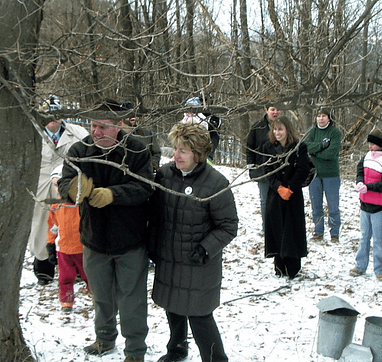
Former New York State Agriculture Commissioner Patrick Hooker drills a taphole with a brace and bit as part of a ceremonial tree tapping at Mapleland Farms in Salem, New York. These events are a common way of celebrating our maple heritage and remembering our historical roots in the maple industry.
When something is pervasive in our everyday lives, it is human nature for us to start taking it for granted. Since maple trees are commonly found throughout eastern North America and sweet foods and drinks are also plentiful wherever we go, we don’t always realize how lucky we are to have such an extraordinary maple resource.
Picture for a minute that maple trees didn’t already exist in the natural world and there was no such thing as tapping trees or boiling down tree sap to make syrup. Now imagine you read a news article about a new tree species that had been developed by scientists called “maples.”
They are relatively fast growing, have beautiful foliage and form, put on a spectacular fall foliage display, withstand extreme temperature fluctuations, and can reproduce naturally in the wild from seed. Chances are you would want to plant some of these new trees.
Then imagine you read about the best part of all: In the late winter and early spring, the tree produces a delicious and nutritious sap that can be consumed as a spring tonic or boiled down into syrup and other confectionary products.
Not only does it taste great, but it is also the healthiest sweetener in the world and commands a premium price in the marketplace. At this point you would probably be making plans to find additional land for planting.
Of course we know that this species already exists, but we rarely take the time to appreciate how amazing maples really are. Whenever I stop to think about the incredible process of maple sugaring, it makes me wonder why so few people use their trees for sap and syrup production.
This first chapter explores the many virtues of maple syrup and the sugaring process; if you aren’t already convinced that you should produce maple syrup, by the end of this chapter I hope you will already be making plans to buy your first evaporator. As I see it, the most important reasons why more people should get into sugaring are as follows:
- Sugaring is a time-honored tradition that connects us with our historical roots.
- Technological advancements have made sugaring relatively easy.
- Sugaring brings families and communities together around a common, worthwhile goal.
- Syrup produced from tree sap is one of the healthiest, all-natural sweeteners.
- Pure maple syrup tastes much better than artificial “pancake syrups.”
- You can take pride and satisfaction in producing your own sweetener.
- There is a growing demand for pure maple products throughout the world.
- Syrup production allows for better conservation of trees and forests.
- Sugaring can be a profitable means of diversifying income streams from your land.
The rest of this chapter explores all these positive attributes in greater detail.
Historical Connection
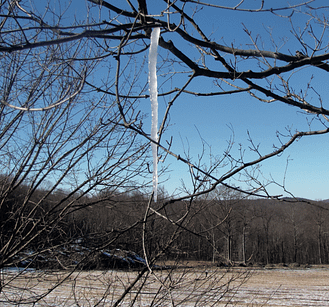
One of the many legends around how humans first discovered the sweetness of maple sap holds that they ate the delicious “sapsicles” that develop from broken branches. Photo Curtesy of Micheal Farrell.
There is a deep, rich history of maple syrup and sugar production in North America. By far the best account is found in Helen and Scott Nearing’s The Maple Sugar Book. For a detailed history and firsthand accounts of sugaring in the early days, there is no better source than the Nearings’ classic work.
Native Americans had been collecting sap and making sugar for centuries before the Europeans arrived, and the early settlers learned the process from them. The Natives were using primitive technologies that relied on making large gashes in the trees to collect sap into birch-bark containers. They built fires to heat rocks and then dropped those rocks in hollowed-out logs full of sap.
The heat from the rocks would transfer to the sap, and water would slowly evaporate away. With improved machinery and the use of metal drill bits, spouts, buckets, tanks, and evaporators, the European settlers gradually developed syrup production into a fairly large industry.
Thanks to the efforts of the US Census Bureau, the USDA National Agricultural Statistics Service (NASS), and Statistics Canada, we have decent records of syrup production in the United States and Canada dating back to the mid-1800s.
Figure 1.2 tracks total maple syrup production over the past 150 years. As you can clearly see, we used to produce a lot more maple syrup and sugar in the United States than we do today!
Maple sugar was one of the primary sweeteners for farm families in the eastern US and Canada during the 1800s. If a family was fortunate enough to have maple trees on their farm, they tapped them in the spring and produced maple sugar (very little of their production was kept as syrup).
The height of maple production actually occurred during the Civil War era when northerners refused to import “slave sugar” from the southern states or Caribbean islands. The Nearings include several unforgettable quotes from the 1800s regarding the use of maple versus cane sugar. Two that stand out in particular come from the Farmers’ Almanac:
Prepare for making maple sugar, which is more pleasant and patriotic than that ground by the hand of slavery, and boiled down by the heat of misery.1
Make your own sugar, and send not to the Indies for it. Feast not on the toil, pain, and misery of the wretched.2
Not only was there a great aversion toward “slave sugar,” but cane sugar was also relatively expensive during that time period due to high shipping costs. We had not yet started making high-fructose corn syrup or beet sugar, so people mostly relied on maple sugar and honey for their sweeteners. A great many farmers took pride in their ability to produce their own sugar and worked extremely hard to do so.
When people started to move off farms during the Industrial Revolution, the remaining farms became larger and more specialized, and the production of maple sugar and syrup severely diminished. As production has declined, so has our consumption of pure maple products.

FIGURE 1.2. This graph is based on historical data from the US Census, the National Agricultural Statistics Service, and Statistics Canada.
According to the Census Bureau, the United States produced a remarkable 6,613,000 gallons of maple syrup in 1860 from a population of 31.5 million people. If no maple products were exported or imported from Canada, the average consumption would have been 27 ounces per person—roughly 10 times the current consumption levels!
Although our population has grown tremendously over the past 150 years, the production of maple products has fallen just as drastically, reaching an all-time low of 757,000 gallons in 1987.
Production has picked back up again over the past decade, and we now produce roughly 2,500,000 gallons of syrup annually and production is growing at 5–10% per year.
Our current consumption is just under 3 ounces per person, but if we didn’t import the vast majority of our syrup from Canada, the average American would get about 1 ounce of maple syrup a year.
This is certainly a sad statistic, especially for a country with the world’s largest economy and over two billion tappable maple trees. If we could produce so much more maple syrup and sugar in the 1800s despite having far fewer people, trees, and processing equipment, surely we can increase the production and consumption of pure maple products today.
There is promising news. The maple industry has been growing in recent years as more people get into it and technological advances allow sugarmakers to achieve higher yields per tap. In fact, maple syrup production is now one of the fastest-growing agricultural industries in the United States, and there was more syrup produced in 2013 than in any year since 1945.
The extraordinary production of over 3 million gallons of maple syrup that year was driven by sugar rationing as part of the World War II efforts. In the good old days people produced maple syrup and sugar out of necessity since other options for sweeteners were limited.
The current expansion of the maple industry has not been driven by necessity, but rather by choice. As people have begun to realize the benefits of eating healthier diets based on natural, whole foods, production and consumption of pure maple products has taken off. Producing your own maple syrup will allow you to rediscover this natural sweetener and its traditional roots.
In today’s marketplace there is an overabundance of cheap, sugary foods available any time of year. It is more difficult to avoid these foods in your diet than it is to include them. However, people are increasingly rejecting the inferior, highly processed sweeteners and are willing to pay more for natural, healthier alternatives.
While some may argue that we don’t need any concentrated sugar in our diets,3 people do enjoy sweet foods, and maple sugar is among the healthiest and most natural sweeteners that exist in the marketplace. Producing and consuming pure maple brings us back to simpler times when people lived off the land and primarily consumed natural, locally made goods. Moreover, to fully experience and appreciate maple in your life, you can’t just consume maple syrup that you picked off a supermarket shelf—you need to make it yourself.
Notes
- Robert B. Thomas, Farmers’ Almanack. Boston: John & Thomas Fleet, 1803.
- Robert B. Thomas, Farmers’ Almanack. Boston: John & Thomas Fleet, 1805.
- An excellent book on the danger of consuming too much sugar is Sugar Blues by William Dufty. (New York: Grand Central Life & Style, 1986).
Recommended Reads
Recent Articles
Confused by all the poultry breed options? We’ve got you covered! Discover how to pick the perfect breed for your flock.
Read MoreYou’ve Been Missing Out! Bone Broth is the ultimate superfood, packed with nutrients and goodness. Consider adding this nutrient-rich, immune system boosting bone broth into your daily diet.
Read MorePermaculture vs Natural Farming: What’s the Difference? How are they connected, and where do they diverge in philosophy and principle?
Read MoreCIDER LOVERS ALERT! 🍎 Did you know the type of apple used can make or break the flavor? Which apple variety do you think makes the best cider?
Read MoreThese small fruits are a delicious source of nutrients that you can find almost anywhere. Get started on acorn harvesting with help from these simple tips!
Read More
